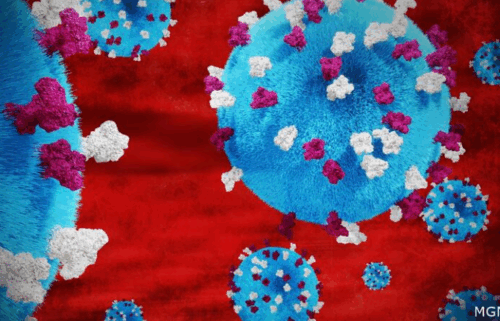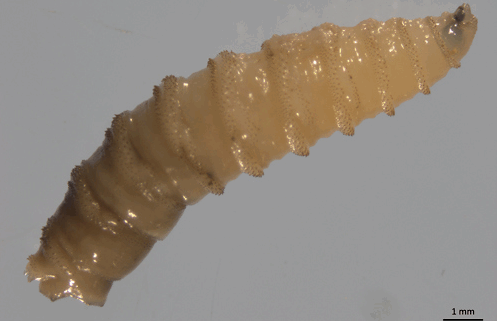Why did EEE cases spike this year? It’s complicated
What exactly is fueling an unprecedented outbreak of the mosquito-borne Eastern equine encephalitis, or EEE, in the United States remains a concerning conundrum — and there could be several factors at play.
As of Wednesday, more than 30 people have become ill with the rare but serious disease, caused by the EEE virus, and 11 of them have died. There have been infections in six states: Massachusetts, Connecticut, Rhode Island, Michigan, New Jersey and North Carolina.
The United States typically averages only seven EEE cases every year, according to the US Centers for Disease Control and Prevention. About 30% of all cases result in death.
The disease is cyclical and outbreaks happen every few years. Yet “this is a very, very unusual year we’re having here in southern New England. Nothing quite like this has been observed before where EEE has become so widespread,” said Alan Gettman, entomologist and mosquito abatement coordinator for the Rhode Island Department of Environmental Management.
“We all want to know, in this very unusual year, how much EEE is out there. Where is it, what species of mosquito is it in, et cetera,” he said. “The threat is out there.”
Birds, mosquitoes and an evolving virus
Birds tend to carry the EEE virus. The majority of wild birds infected with the virus exhibit no clinical signs, but EEE can cause illness or death in some bird species, such as pigeons, pheasants and emus.
Then, certain mosquitoes that feed on both bird and human blood spread the virus from birds to humans.
The mosquito species that often create this “bridge” between infected birds and uninfected humans include Adeles, Coquillettidia and Culex species, according to the CDC.
When a bird is exposed to the EEE virus, that bird can build up an immunity to the virus, causing less spread of disease, said Catherine Brown, state epidemiologist and state public health veterinarian at the Massachusetts Department of Public Health. Massachusetts has the highest number of EEE cases out of all the states in the current outbreak.
“In 2012, which in Massachusetts that was the end of our last EEE outbreak, we had a lot of birds that had gotten exposed to the virus and so the immunity in the bird population was very high. If you have a population with a high immunity, it makes it harder to sustain that EEE activity,” Brown said.
“Some of those birds obviously got old and died off and new birds have been hatched, but because they were being hatched into a time when there wasn’t a lot of EEE activity, they are all susceptible to it,” she said. “Between 2012 and 2019, essentially what happened is we have an increasing proportion of susceptible birds in Massachusetts.”
Then, to really see the EEE virus spread, “you need the right mosquitoes and you need large populations of them,” Brown said.
“After several years of drought in Massachusetts, we had a lot of rain last fall. We had a lot of rain this spring. As well as early warm temperatures, and that set us up with very large and unusually large mosquito populations,” she said. “Since the mosquitoes are what spread the virus between the birds and also then can spread the virus to humans, obviously having large populations of mosquitoes is necessary and is another part of the story.”
The last piece of the outbreak puzzle could be the EEE virus itself.
In Florida, where the virus circulates year-round due to the warm climate, the virus has been known to slowly evolve over time.
“Every once in a while, a slightly different strain of the virus that has evolved in Florida gets transported north in a migratory bird, or probably several migratory birds, and it gets introduced into Massachusetts,” Brown said.
For instance, the last two outbreak cycles of EEE in Massachusetts were found to involve new variants of the EEE virus, she said.
For the current outbreak, “we haven’t done the genetic sequencing of the virus yet to prove that that has happened this year also,” Brown said.
“But given our historical information, which suggests that that is an important factor, I believe that once we do the genetic analysis, what we’re going to find is that this is some variant of EEE virus,” she said. “My suspicion is that we may find something about this particular variant that will help explain why we’re seeing activity in so many places.”
Waiting for a hard frost
EEE outbreaks occur in cycles, and “what I think is likely to happen is that this is the beginning of our next outbreak cycle — so that we will continue to see activity for probably the next two years,” Brown said.
Cyclical EEE cases occur primarily from late spring through early fall, and weather can play an important role in a possible EEE outbreak.
Currently, “it may be that we’re seeing warmer weather in the wrong parts of the year. That means mosquitoes can survive and perpetuate that cycle,” said Sadie Ryan, an associate professor of medical geography at the University of Florida in Gainesville.
“What I’m hearing from people is that this year is a bit wetter, and that there’s been enough of the right kind of wet for longer at warmer temperatures — and that may be perpetuating more mosquitoes to be around to bite people,” she said.
“Whether that’s a new normal, I don’t know,” she added. “It might be a climate signal, but is it a climate change signal? I don’t quite know. We haven’t had enough years like this.”
Just as climate can play a role in setting the perfect environment for an outbreak to occur, it can also play a role in stopping the outbreak.
“At this point, the thing that will end the 2019 outbreak is a hard frost, because that’s what’s going to kill off the mosquitoes that are currently carrying triple E,” Brown said.
“The ecology that supports triple E activity is so complex, involving birds and mosquitoes and the right kind of habitat and weather and the virus itself. It’s so complicated that small changes in any one of those factors can really change what is observed,” she said.
To help reduce the risk of EEE infection, health officials are urging people to use insect repellants registered with the US Environmental Protection Agency, wear clothing that covers your skin while outdoors, and stay indoors from dusk to dawn when mosquitoes are most active.




